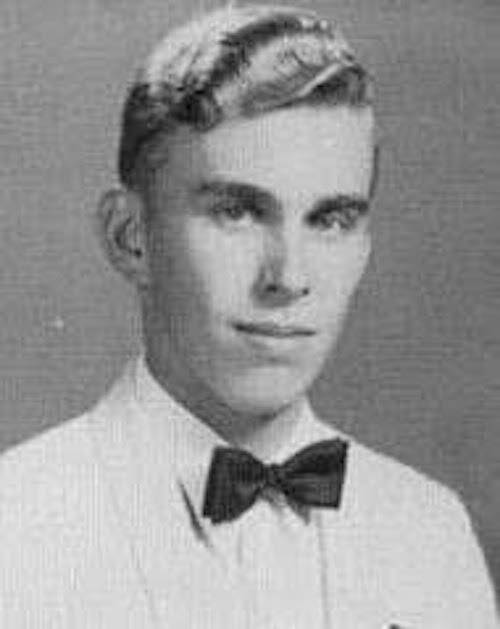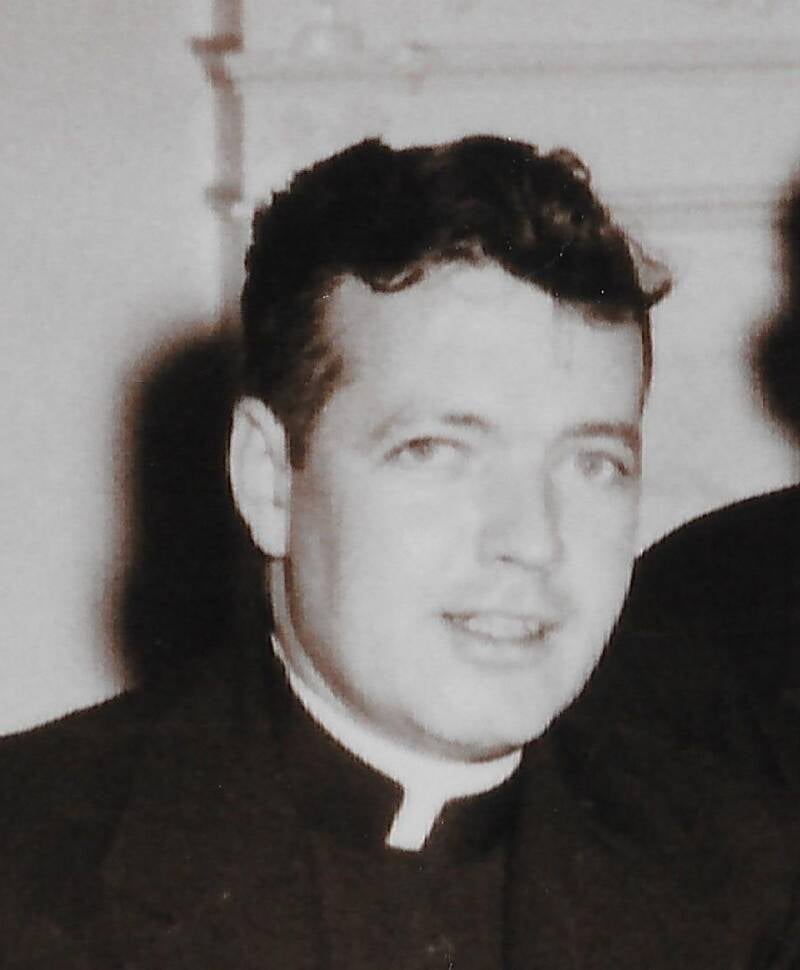With all the evil that's coming out of the shadows right now, I'm reminded of the movie The Exorcist, about the exorcism of a demonic spirit from a young girl. That movie was released in 1973 when I was in sixth grade. I certainly didn't see it then, and I have no plans to see it today. I am too much of a wimp to sit through something that scary.
Nowadays I'm wondering what world leaders involved politics, economics, or healthcare could stand a good exorcism. I digress. The movie was based on the novel The Exorcist by William Peter Blatty. But what inspired his novel? An actual exorcism. Take a look at this article, "Inside the Harrowing Exorcism of Roland Doe," featured on Allthatinteresting.com:

Public DomainRoland Doe, the pseudonym of Ronald Hunkeler, the boy whose harrowing exorcism in 1949 later inspired The Exorcist.
In the picturesque Bel-Nor neighborhood of St. Louis, Missouri, sits a beautiful, Colonial-style house on Roanoke Drive that was once the home of a boy called Roland Doe, a.k.a. Robbie Mannheim or Ronald Hunkeler.
It looks normal on the outside, with an all-brick exterior and white shutters framing the windows. Huge trees and neatly manicured bushes dot the yard. Yet one of the most extraordinary horror stories in American history transformed this house into a landmark for the macabre and provided the true story of The Exorcist.

Discovery via Getty ImagesThe St. Louis house once home to “Roland Doe” as seen in 2015.
The story began in January 1949 in Washington, D.C., where 13-year-old Ronald Hunkeler, a.k.a. Roland Doe began exhibiting disturbing behavior that left his parents baffled and terrified. He was calm and normal during the day, but at night, he would suddenly erupt into screaming fits and other wild outbursts. Meanwhile, he would enter a trance-like state, make sounds in a guttural voice, and break out in scratches and red lines all over his body.
After getting nowhere with doctors, his horrified parents brought him to where their relatives lived in St. Louis and called in Jesuit priests to carry out a harrowing series of exorcisms. As they desperately tried to wrest the demons from his body, they claimed that the boy’s bed moved on its own, slid violently across the room, and knocked them over.
Finally, on April 18, the priests laid holy relics and crucifixes upon Ronald, shouting at Satan and telling the demon that St. Michael would battle him for the boy’s soul.
Seven minutes later, Ronald came out of his trance and told them simply, “He’s gone.”
The true story behind The Exorcist begins in the late 1940s in suburban Washington, D.C., with a German-American family.
Their 13-year-old, believed to be named Ronald Hunkeler (later referred to pseudonymously as “Roland Doe” or “Robbie Mannheim”), was despondent over the loss of his beloved Aunt Harriet. Harriet was a spiritualist who’d taught him many things — including how to use a Ouija board.

Wikimedia CommonsFather E. Albert Hughes, the first priest who attempted to perform an exorcism on Roland Doe
In early January 1949, shortly after Harriet’s death, Ronald Hunkeler began to experience strange things. He heard scratching sounds coming from the floors and walls of his room. Water dripped inexplicably from pipes and walls. Most troubling of all was that his mattress would suddenly move.
Disturbed, Ronald’s family sought the help of every expert they knew. The family consulted doctors, psychiatrists, and their local Lutheran minister, but they were no help. The minister suggested that the family seek the assistance of the Jesuits.
Father E. Albert Hughes, the local Catholic priest, asked his superiors’ permission to perform an exorcism on the teenager in late February of 1949. The church granted Hughes’ request.
For the exorcism, Hughes strapped the boy to the mattress and began his recitations. But he had to stop the rite when Ronald broke off a piece of mattress spring and slashed the priest across his shoulders, leaving the exorcism unfinished.
A few days later, red scratches appeared on Roland Doe. One of the scratches formed the word ‘LOUIS,’ which indicated to Ronald’s mother that the family needed to go to St. Louis, where the Hunkelers had relatives, to find a way to save their son.

Public DomainWilliam Bowdern, one of two priests who performed the St. Louis exorcism of Roland Doe
A cousin of the family was attending St. Louis University at the time of Ronald’s struggles. She put the Hunkelers in touch with Father Walter H. Halloran and Rev. William Bowdern. After consulting with the university’s president, these two Jesuits agreed to perform an exorcism on young Ronald with the help of several assistants.
The men gathered at the residence on Roanoke Drive in early March of 1949. There, the exorcists witnessed scratching on the boy’s body and the mattress moving violently. These were the same types of things that had happened in Maryland when the first exorcism failed.
Amid these bizarre happenings, Bowdern and Halloran, according to their reports, noticed a pattern in Ronald’s behavior. He was calm and normal during the day. But at night, after settling in for bed, he would exhibit strange behavior, including screaming and wild outbursts.
Ronald would also enter a trance-like state and start making sounds in a guttural voice. The priests also said they saw objects mysteriously flying in the boy’s presence and noted that he would react violently when he saw any sacred object presented by the attending Jesuits.
All of these details from the true story of The Exorcist made it into the film. But there were more that didn’t.
For the complete article, click here.
Have you ever seen The Exorcist? Thanks for visiting and have a great week!




No comments:
Post a Comment